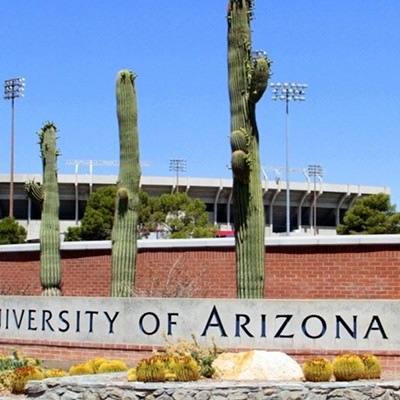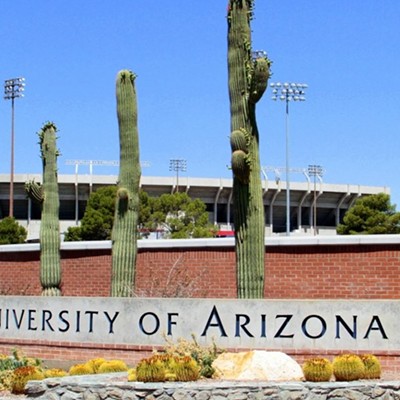Twenty years after the original crew sealed themselves inside of Biosphere 2, the University of Arizona is set to be the new owner of the massive greenhouse north of Tucson.
CDO Ranching and Development has agreed to give Biosphere 2, located off of Oracle Road north of Catalina, to the UA College of Science, which has been managing the facility for several years, to conduct climate-change research and other projects.
"This is a big benchmark," says Travis Huxman, a professor in the UA's Department of Ecology and Evolutionary Biology who has been heading up the UA's research efforts at Biosphere 2 since 2007.
In recent years, scientists have examined how climate change affects the trace gasses that arise from the landscape and have teamed up with researchers in the Amazon to use Biosphere 2's tropical forest to study the effects of drought.
Meanwhile, work continues on the Landscape Evolution Observatory, or LEO, an artificial watershed which will allow scientists to better understand the movement of water through soil and plants, so people might better respond to anticipated droughts.
While LEO's construction won't be completely finished for another five years, the team has been developing the computer and theoretical models that will accompany the experiment.
Huxman says Biosphere 2 is the best place for a project like LEO, "because it's the only place where we can close the water budget. There are other watersheds in the world that are heavily monitored, but there's always a piece of the puzzle that we can't accurately measure. ... LEO is sort of a fruit fly where we can test questions that actually relate to the broader research we're doing on real ecosystems."
Biosphere 2, with its tropical rainforest, grassland savannah, mangrove wetland, desert, and small saltwater ocean with a beach, has come a long way over the last two decades.
It was originally built as an experiment to keep a sealed environment for a century. But only one eight-person crew managed to complete a full two-year mission, after being sealed inside the Biosphere 2 in September 1991.
As the Biosphere 2 mission faced scientific skepticism and heated internal politics, the project's managers were replaced during the second tour of duty. That decision inspired a pair of former Biospherians to break into and vandalize the facility, effectively ruining its claim of having a sealed environment.
The project was funded by Texas oil billionaire Ed Bass, who leased Biosphere 2 to University of Arizona in 2007, four years after Columbia University gave up its interest in the facility.
Bass said in a statement that he was happy to see the UA take title to Biosphere 2, because the College of Science "has demonstrated a passionate commitment to Biosphere 2 and its capacity to explore the urgent questions relating to the sustainability of our planet Earth. I am thrilled this incredible apparatus has found a permanent home at such an extraordinary institution."
UA officials are estimating Biosphere 2, which cost more than $200 million to build, is worth $100 million today.
As part of the deal, the UA College of Science will receive 40 acres around Biosphere 2, including a conference center, a collection of casitas and an energy center.
CDO Ranching and Development owns more than 1,500 acres around Biosphere 2 that it hopes to develop into green homes in the future.
Bass' Philecology Foundation will also give the UA a $20 million grant to cover the cost of running the facility in future years.
With the casitas and meeting rooms on the property, the College of Science can host everything from scientific conferences to training for high school science teachers.
The number of people touring Biosphere 2 has skyrocketed since the UA took it over, from roughly 38,000 in the first year to just more than 100,000 in the fiscal year that ends this week, according to Huxman.
"We're very dedicated to the mission of being a scientific space in the public face," Huxman says.
Hassan Hijazi, director of external affairs for Biosphere 2, says it should be easier to get government and foundation grants now that the UA owns the facility.
"It is going to be a tremendous asset for the university," says Hijazi. "Once you have the facility for the long-term, the investment from the federal and state governments and the foundations will be a lot more. Now we have full control in terms of what we can do in terms of experiments."

















